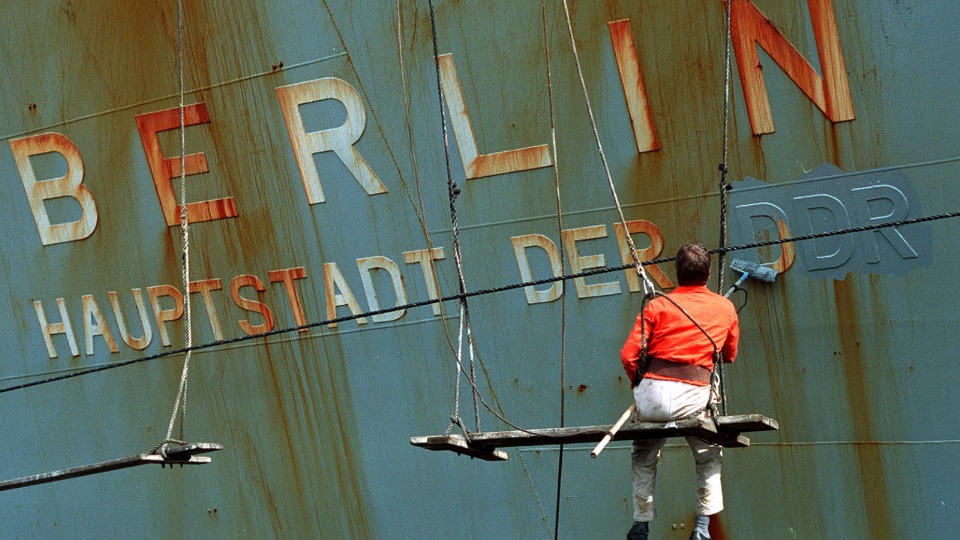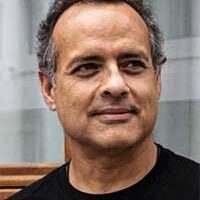
A full generation has elapsed since the Union of Soviet Socialist Republics (USSR) collapsed in late 1991. Two years earlier, in 1989, the socialist countries states of Eastern Europe gave way to a capitalism that forced its way in—the first salvo came when Hungary opened its border with Austria.
Three months later, on June 15, Soviet leader Mikhail Gorbachev told the press in Bonn (West Germany) that the Berlin Wall “could disappear when the preconditions which brought it about cease to exist.” He did not list the preconditions, but he said, “Nothing is permanent under the Moon.” On Nov. 9, 1989, the Berlin Wall was indeed opened under orders of the German Democratic Republic’s (East Germany’s) ruling party, the Socialist Unity Party.
The capitalist West Germany, which like so many other capitalist countries, had long accused socialist states of “exporting socialism,” then itself joined the capitalist countries of the world in exporting capitalism into what had been the socialist GDR. Rather than live peacefully alongside a socialist GDR, West Germany, by October 1990, absorbed the GDR into itself.

Upon unification, the structures of the GDR had to be demolished. Headed by the Social Democratic politician Detlev Rohwedder, the new rulers created the Treuhandanstalt (“Trust Agency”) to privatize 8,500 public enterprises that employed over four million workers. “Privatize quickly, restructure resolutely, and shut down carefully,” Rohwedder said. But before he could do this, Rohwedder was assassinated in April 1991.
He was succeeded by the economist Birgit Breuel who told the Washington Post, “We can try to explain ourselves to people, but they will never love us. Because whatever we do, it’s hard for people. With every one of the 8,500 enterprises, we either privatize or restructure or close them down. In every case, people lose jobs.” Hundreds of firms that had been public property (Volkseigentum) fell into private hands, and millions of people lost their jobs; during this time, 70% of women lost their jobs. The stunning scale of the corruption and cronyism only came out decades later in a German parliamentary inquiry in 2009.
Publishing companies and millions of books were confiscated. Mark Twain’s classics were among them. Public libraries were emptied, and books that people could get for tiny sums of money were trashed. Many of them, reminiscent of the days of the Nazis, were actually burned to make way for the incoming West German publishing companies. Political purges were orchestrated to remove thousands of professors and teachers who were not pro-capitalist from their positions in schools and universities.
Not only did the public property of the GDR slip into the pockets of private capital, but the entire history of the country vanished in a haze of anti-communist rhetoric. The only word that remained to define the 40 years of GDR history was stasi, the colloquial name for the Ministry for State Security. Nothing else mattered. Neither the de-Nazification of that part of Germany—which was not conducted in the West—nor the impressive gains in housing, health, education, daycare, and social life occupy space in the public imagination.

Some policies that the GDR pioneered only live on in other countries. To a large extent, Finland and other Scandinavian countries copied the GDR’s approach to daycare, which, ahead of its time, surpassed even the daycare proposals of the Biden administration’s Family Plan. In the GDR, daycare was a true part of the infrastructure and encompassed everyone from six months up to 18. The older youth were cared for in excellent sports, theatre, and social clubs. Young parents could pursue full-time careers while the children had healthy activities to occupy their time. Disillusionment and crime were not the choices young people had to make in the GDR.
How many people realize that on weekends U.S. soldiers stationed in West Berlin spent their time off in the East, where their small change purchased excellent meals, good beer, and entrance to countless recreational activities?
There is little mention in the history books today of the GDR’s contribution to the anti-colonial struggle or the socialist construction experiments from Vietnam to Tanzania. All this vanished, the earthquake of the reunification swallowing up the achievements of the GDR and leaving behind descriptions of an imagined land of social despair.
Few realize that in opinion poll after poll—whether in the 1990s or the 2000s— large numbers of people living in former East Germany look back longingly for the GDR past. This Ostalgie (‘East nostalgia’) remains intact, reinforced by the greater unemployment and lower incomes existing today in the eastern part of Germany.
In 1998, the German parliament set up the Federal Foundation for the Study of Communist Dictatorship in East Germany, which set the terms for the national appraisal of socialism in the GDR. The organization’s mandate was to fund research on the GDR that would portray it as a criminal enterprise rather than a historical project. Fury governed the historical undertaking. The attempt to delegitimize Marxism and socialism in Germany mirrored attempts in other countries in Europe and North America that hastened to snuff out the reappearance of these movements. The ferocity of efforts to rewrite history suggested a fear of a return of support for socialism in powerful circles, especially in a more democratic form.

The Tricontinental Institute for Social Research has partnered with the Internationale Forschungsstelle DDR to produce the first of a new series, Studies on the DDR. The first study, Risen from the Ruins: The Economic History of Socialism in the German Democratic Republic, goes beneath the anti-communist sludge to unearth, in a reasonable way, the historical development of the 40-year project in the GDR. Based in Berlin, the text authors sifted through the archives and memories, interviewing those who helped construct socialism in Germany at different levels of society.
Peter Hacks, a poet of the GDR, said in retrospect, “The worst socialism is better than the best capitalism. Socialism, that society that was toppled because it was virtuous (a fault on the world market). That society whose economy respects values other than the accumulation of capital: the rights of its citizens to life, happiness, and health; art and science; utility and the reduction of waste.” For when socialism is involved, Hacks said, it is not economic growth, but “the growth of its people that is the actual goal of the economy.” Risen from the Ruins lays out the story of the GDR and its people from the ashes of Germany after the defeat of fascism to the economic pillage of the GDR after 1989.
One of the least known parts of the GDR’s history explored is its internationalism, wonderfully explored in this study. Three brief extracts make the point:
1. Solidarity Work. Between 1964 and 1988, sixty friendship brigades of the Free German Youth (the GDR youth mass organization) were deployed to 27 countries to share their knowledge, help with construction, and create training opportunities and conditions for economic self-sufficiency. Many of these projects still exist today, though some have taken on different names, such as the Carlos Marx Hospital in Managua, Nicaragua; the German-Vietnamese Friendship Hospital in Hanoi, the Vietnam Karl Marx Cement Factory in Cienfuegos, Cuba, to name but a few.
2. Learning and Exchange Opportunities. Overall, more than 50,000 international students completed their education at the universities and colleges of the GDR. The GDR’s state budget financed the studies. As a rule, there were no tuition fees, many international students received scholarships, and the GDR provided accommodations for them in student halls of residence. In addition to the students, many contract workers came to the GDR from allied states, such as Mozambique, Vietnam, and Angola, as well as from Poland, and Hungary, seeking job training and work in production. Right until the end, foreign workers remained a priority, with contract workers growing from 24,000 to 94,000 (1981-89). In 1989, all foreigners in the GDR received full municipal voting rights and began to nominate candidates themselves.
3. Political Support. While the West was slandering Nelson Mandela and the African National Congress (ANC) as terrorists and “racists” and conducting business with the apartheid regime in South Africa—even providing arms shipments—the GDR supported the ANC, provided the freedom fighters with military training, printed their publications, and cared for its wounded. After Black students in the township of Soweto launched an uprising against the apartheid regime on June 16, 1976, the GDR began to commemorate international Soweto Day as a sign of solidarity with the South African people and their struggle. Solidarity was even extended to those in the belly of the beast: When Angela Davis was tried as a terrorist in the United States, a GDR correspondent presented her with flowers for International Women’s Day, and students led the One Million Roses for Angela Davis campaign, during which they delivered truckloads of cards with hand-painted roses to her in prison.
The memory of this solidarity no longer remains, either in Germany or South Africa. Without the material support provided by the GDR, the USSR, and Cuba, it is unlikely that national liberation in South Africa would have come when it did. Cuban military support for the national liberation fighters at the 1987 Battle of Cuito Cuanavale was crucial for this defeat of the South African apartheid army, leading eventually to the collapse of the apartheid project in 1994.

Organizations such as the Federal Foundation for the Study of Communist Dictatorship in East Germany and the Victims of Communism Memorial Foundation (based in Washington) exist not only to denigrate the past and to malign socialism but also to make sure that socialist projects in the present carry the penalty of their caricatures. To advance a left project in our time—which is imperative—is made much more difficult if it must carry the albatross of anti-communist fabrications on its back.
That is the reason why this project, led by IF DDR, is so important. It is not merely an argument about the GDR; it is also, at its core, a broader argument about the possibilities opened by experiments to create a socialist society and the material improvements they create and have created in the lives of the people.
Socialism does not emerge fully-fledged nor perfectly formed. A socialist project inherits all the limitations of the past. It takes effort and patience to transform a country, with its rigidities and class hierarchies, into a socialist society. The GDR lasted for a mere 40 years, half the life expectancy of the average German citizen. In its aftermath, the adversaries of socialism exaggerated all its problems to eclipse its achievements.
Volker Braun, an East German poet, wrote an elegy to his forgotten country in October 1989 called Das Eigentum, or Property.
I’m still here: my country has gone West.
PEACE FOR THE PALACES AND WAR ON THE SHACKS.
I myself have given my country the boot.
What little virtue it possessed burns in the fire.
Winter is followed by a summer of desire.
I might as well get lost, who cares what’s next
And no one will ever again decipher my texts.
What I never possessed, from me was taken.
I will eternally long for what I didn’t partake in.
Hope appeared on the path like a trap
You grope and grab at the property I had.
When will I say mine again and mean we and ours.
Our quest here is not to reverse direction and exaggerate all the achievements while hiding the problems. The past is a resource to understand the complexities of social development to learn what went wrong and what went right. In collaboration with the Tricontinental Institute for Social Research, the IF DDR project is invested in this kind of archaeology to dig amongst the bones to discover how to improve the way we humans stretch our spines and stand upright with dignity.
An earlier version of this article appeared at Tricontinental. John Wojcik contributed to this version for People’s World.










